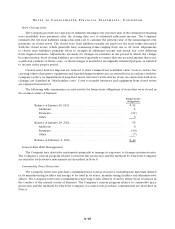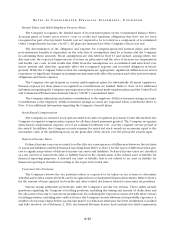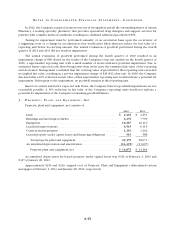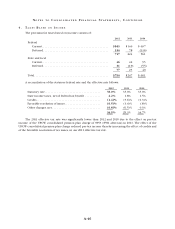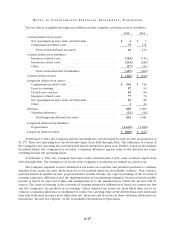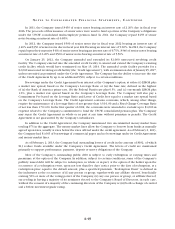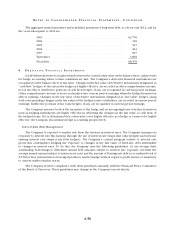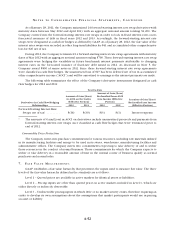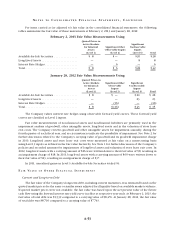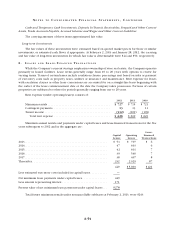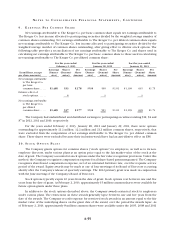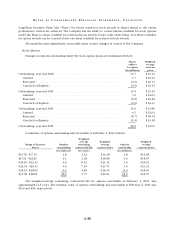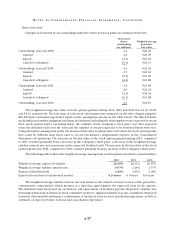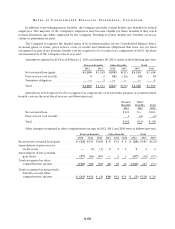Kroger 2012 Annual Report Download - page 108
Download and view the complete annual report
Please find page 108 of the 2012 Kroger annual report below. You can navigate through the pages in the report by either clicking on the pages listed below, or by using the keyword search tool below to find specific information within the annual report.
A-50
NO T E S T O C O N S O L I D A T E D F I N A N C I A L S T A T E M E N T S , CO N T I N U E D
The aggregate annual maturities and scheduled payments of long-term debt, as of year-end 2012, and for
the years subsequent to 2012 are:
2013 .................................................... $2,700
2014 .................................................... 320
2015 .................................................... 517
2016 .................................................... 463
2017 .................................................... 607
Thereafter ............................................... 3,869
Total debt ................................................ $8,476
6 . D E R I V A T I V E F I N A N C I A L I N S T R U M E N T S
GAAP defines derivatives, requires that derivatives be carried at fair value on the balance sheet, and provides
for hedge accounting when certain conditions are met. The Company’s derivative financial instruments are
recognized on the balance sheet at fair value. Changes in the fair value of derivative instruments designated as
“cash flow” hedges, to the extent the hedges are highly effective, are recorded in other comprehensive income,
net of tax effects. Ineffective portions of cash flow hedges, if any, are recognized in current period earnings.
Other comprehensive income or loss is reclassified into current period earnings when the hedged transaction
affects earnings. Changes in the fair value of derivative instruments designated as “fair value” hedges, along
with corresponding changes in the fair values of the hedged assets or liabilities, are recorded in current period
earnings. Ineffective portions of fair value hedges, if any, are recognized in current period earnings.
The Company assesses, both at the inception of the hedge and on an ongoing basis, whether derivatives
used as hedging instruments are highly effective in offsetting the changes in the fair value or cash flow of
the hedged items. If it is determined that a derivative is not highly effective as a hedge or ceases to be highly
effective, the Company discontinues hedge accounting prospectively.
Interest Rate Risk Management
The Company is exposed to market risk from fluctuations in interest rates. The Company manages its
exposure to interest rate fluctuations through the use of interest rate swaps (fair value hedges) and forward-
starting interest rate swaps (cash flow hedges). The Company’s current program relative to interest rate
protection contemplates hedging the exposure to changes in the fair value of fixed-rate debt attributable
to changes in interest rates. To do this, the Company uses the following guidelines: (i) use average daily
outstanding borrowings to determine annual debt amounts subject to interest rate exposure, (ii) limit the
average annual amount subject to interest rate reset and the amount of floating rate debt to a combined total of
$2,500 or less, (iii) include no leveraged products, and (iv) hedge without regard to profit motive or sensitivity
to current mark-to-market status.
The Company reviews compliance with these guidelines annually with the Financial Policy Committee
of the Board of Directors. These guidelines may change as the Company’s needs dictate.


